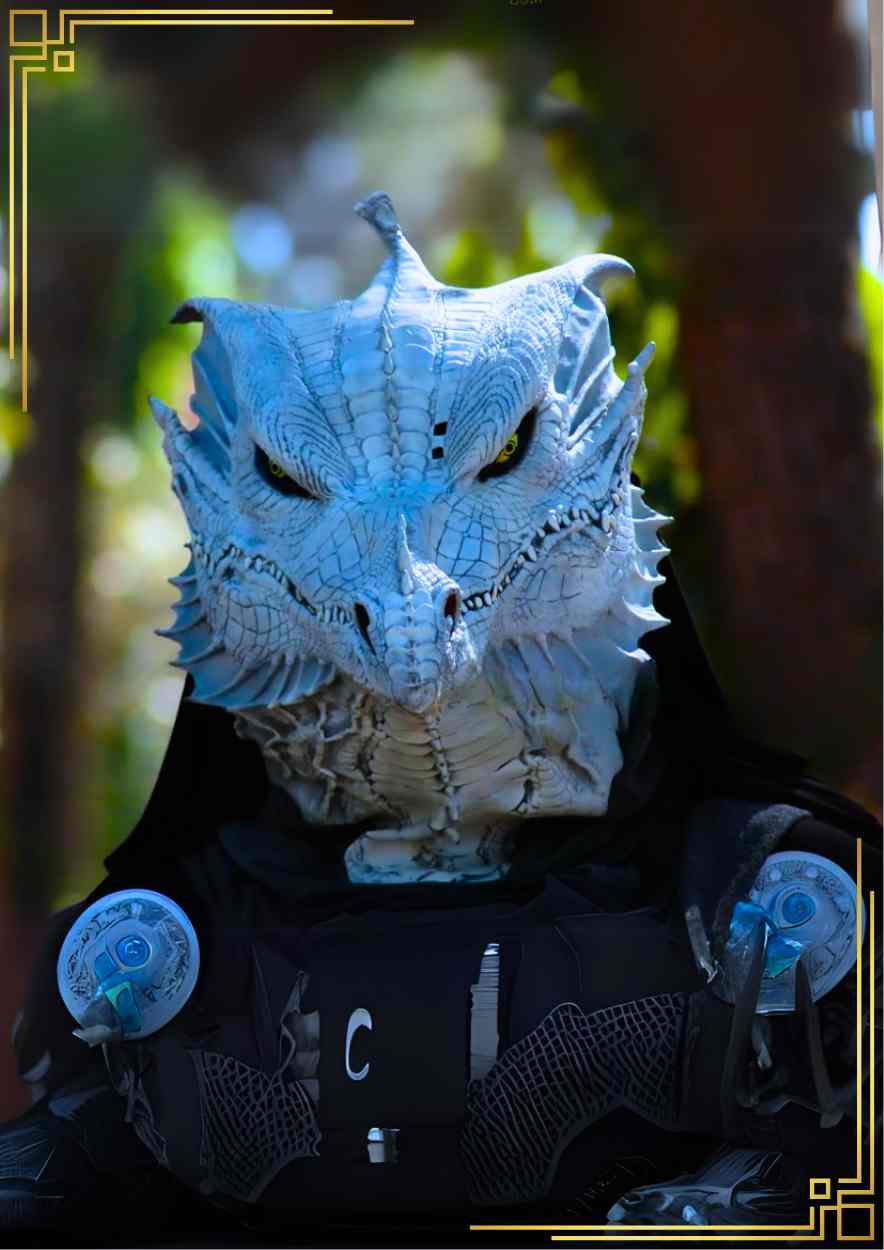Dragonborn
Golden scales shimmering like the sun, Anaximander ducked and swiped beneath the glowing twilight sky, sword dashing in complex arcs around the practice dummy. He paused, his blade hanging at the wooden throat, the fire in his belly poised to crisp the mannequin to ash.
Discipline, he reminded himself. Again.
With a deep breath, the dragonborn stood straight, shook his huge arms, and reset his position with military exactness.
Before he could swing the sword again, a shout interrupted him. “You still practicing that same manoeuvre? I’ve been done an hour already.” It was Hops, headed to the tavern. “Surely you’ve mastered it by now?”
Anaximander looked impassively at his little adventuring partner. His voice was, as always, solemn and unwavering. “I do not practice until it is right. But until it cannot ever be wrong.”
Dragonborn: An Overview
While the true origins of Dragonborn are unknown, many stories that seek to explain how they emerged, a good portion of which describe a mysterious union between a great dragon and a some Human of renown or other. Whatever their beginnings, Dragonborn wear their strength and confidence like a mantle, and take on the world with a dignified presence that often invokes awe and unease in others.
Physical description and combat
Fast growers, dragon-born walk hours after hatching and reach adulthood by 15. Dragonborn stand tall and proud, resembling dragons in bipedal form, usually (but not always) without wings and tails. Their scales may bear the vibrant hues of primary colors, the shimmering shine of precious metals, or may be more dull and uniform. Whatever their color, they are normally imposing in stature, often exceeding 6 feet in height and weighing over 300 pounds. Their hands and feet are formidable, with claw-like digits, and while they wear clothes and armor, they cannot wear standard gloves or boots. Whilst formidable with swords and other weapons, their breath weapon, capable of exhaling destructive energy in various forms, is their true weapon of choice.
A life of Discipline and Ceremony
The period of a Dragonborn's youth is short, and there is little time for play in Dragonborn societies. Their daily interactions, focussed on ceremony and clan, are steeped in solemnity, and their lives are simple and disciplined, focussing on self-improvement in service of one’s self and one’s clan. This drive for self-improvement has led to excellence in areas considered valuable, such as crafting and military arts. Their fine art and songs expound on the deeds of the great clan heroes of the past, and have strict forms and conventions. In the histories, these heroes often consort with dragons, but have little time for deities, reflecting a wider philosophy of Dragonborn.
Families and Societies: all for the Clan
For a Dragonborn, clan is everything. Each member's actions reflect upon the clan's honor, and although a dishonored member is never exiled, they often choose self-exile if they feel their actions are unforgivable. Their place and duties provide logic and structure to the world, and their clan is typically their ultimate bond, beyond an individual family member.
Dragonborn tend towards the insular, finding other species too jocular for their tastes, particularly the Gnome and elf species. Wherever possible, clans are self-reliant, and only if pushed will they seek the assistance of other clans. Help from outsiders - or even the gods - is sought only as a last resort.
Names
For Dragonborn, clan comes first, and that is echoed in their name. When asked, a Dragonborn will always introduce themselves with their clan name, adding their personal name as an afterthought. Dragonborn names are gender neutral.
Dragonborn clan names: Tazradyxen, Korrintharvek, Zhulrathkarra, Vendrashkil, Urnagathorx, Drakazhulven, Serathkarnor, Thurizadryx, Morrakashen,
Dragonborn first names: Tharnok, Velmorran, Dravikash, Zorveth, Malgrith, Rhakzor, Tarnivex, Krevhan, Shadrik, Voragul
Reasons to go Adventuring
Dragonborn rarely leave their homes, but in service of their clan they will go to great lengths and make significant sacrifices. They are also driven by an innate desire for self-improvement. Dragonborn rarely follow a deity, but they are hungry for the secrets they hold, which have the power to lift their clan up above others. Finally, a dishonored dragonborn may leave their clan in self-exile until they feel they have regained their honor and atoned for their errors.
Creating a Dragonborn Player Character
Your draconic heritage manifests in a variety of traits you share with other dragonborn.
| Dragon | Damage Type | Breath Weapon |
|---|---|---|
| Black | Acid | 5 by 30 ft. line (Dex. save) |
| Blue | Lightning | 5 by 30 ft. line (Dex. save) |
| Brass | Fire | 5 by 30 ft. line (Dex. save) |
| Bronze | Lightning | 5 by 30 ft. line (Dex. save) |
| Copper | Acid | 5 by 30 ft. line (Dex. save) |
| Gold | Fire | 15 ft. cone (Dex. save) |
| Green | Poison | 15 ft. cone (Dex. save) |
| Red | Fire | 15 ft. cone (Dex. save) |
| Silver | Cold | 15 ft. cone (Dex. save) |
| White | Cold | 15 ft. cone (Dex. save) |
The DC for this saving throw equals 8 + your Constitution modifier + your proficiency bonus. A creature takes 2d6 damage on a failed save, and half as much damage on a successfulone.
The damage increases to 3d6 at 6th level, 4d6 at 11th level, and 5d6 at 16th level.After you use your breath weapon, you can’t use it again until you complete a short or long rest.








Comments